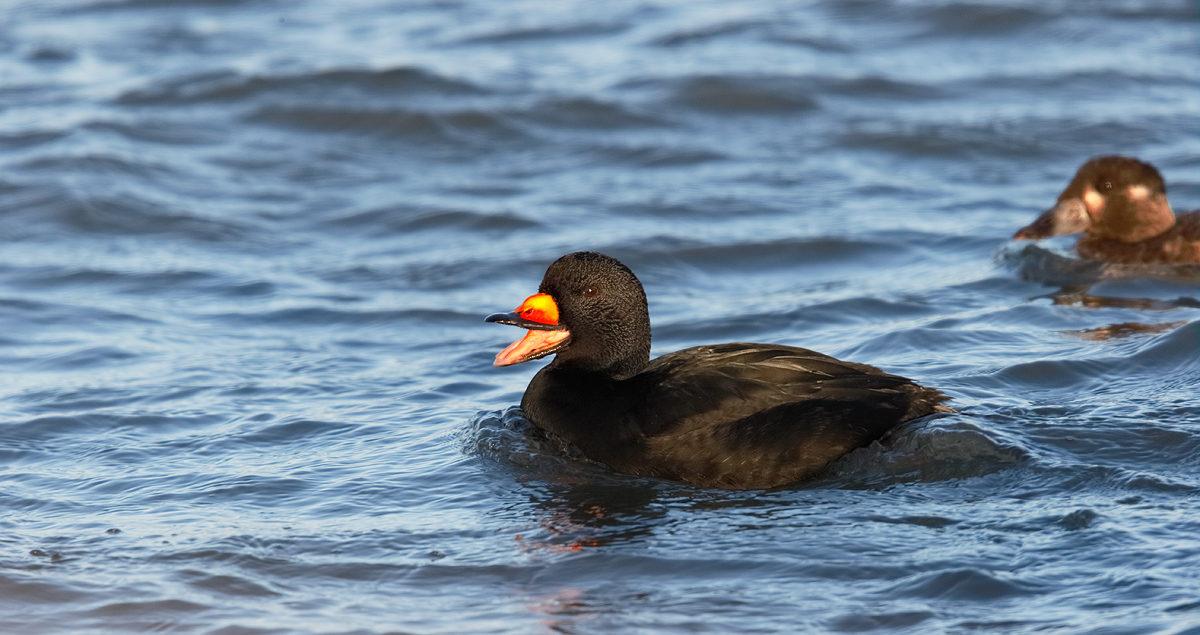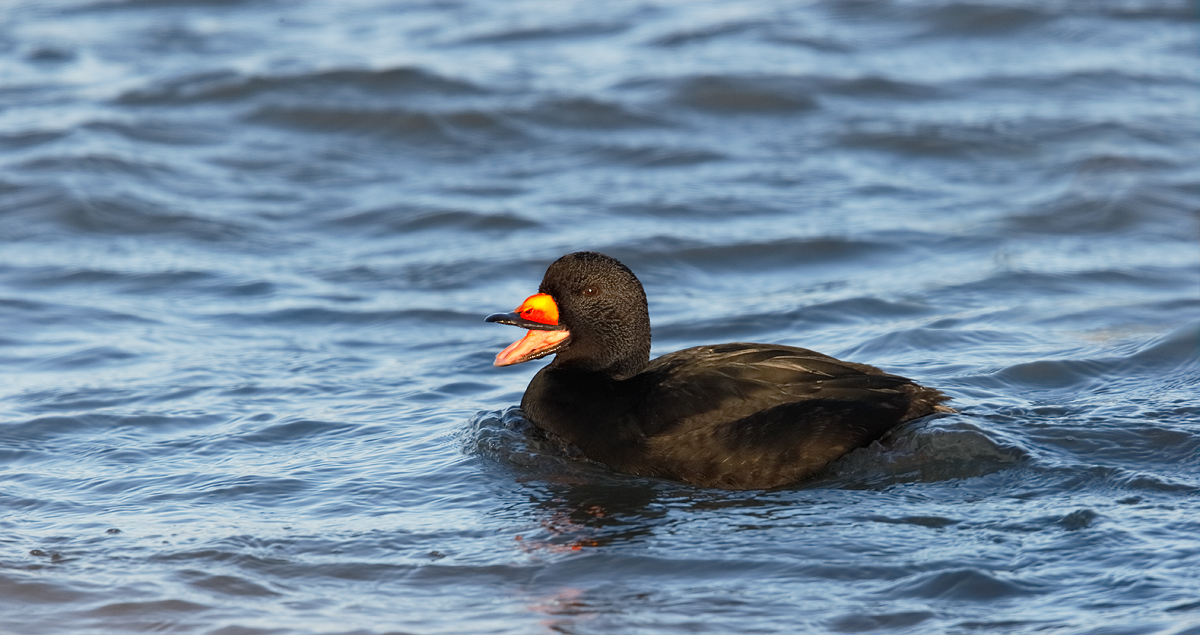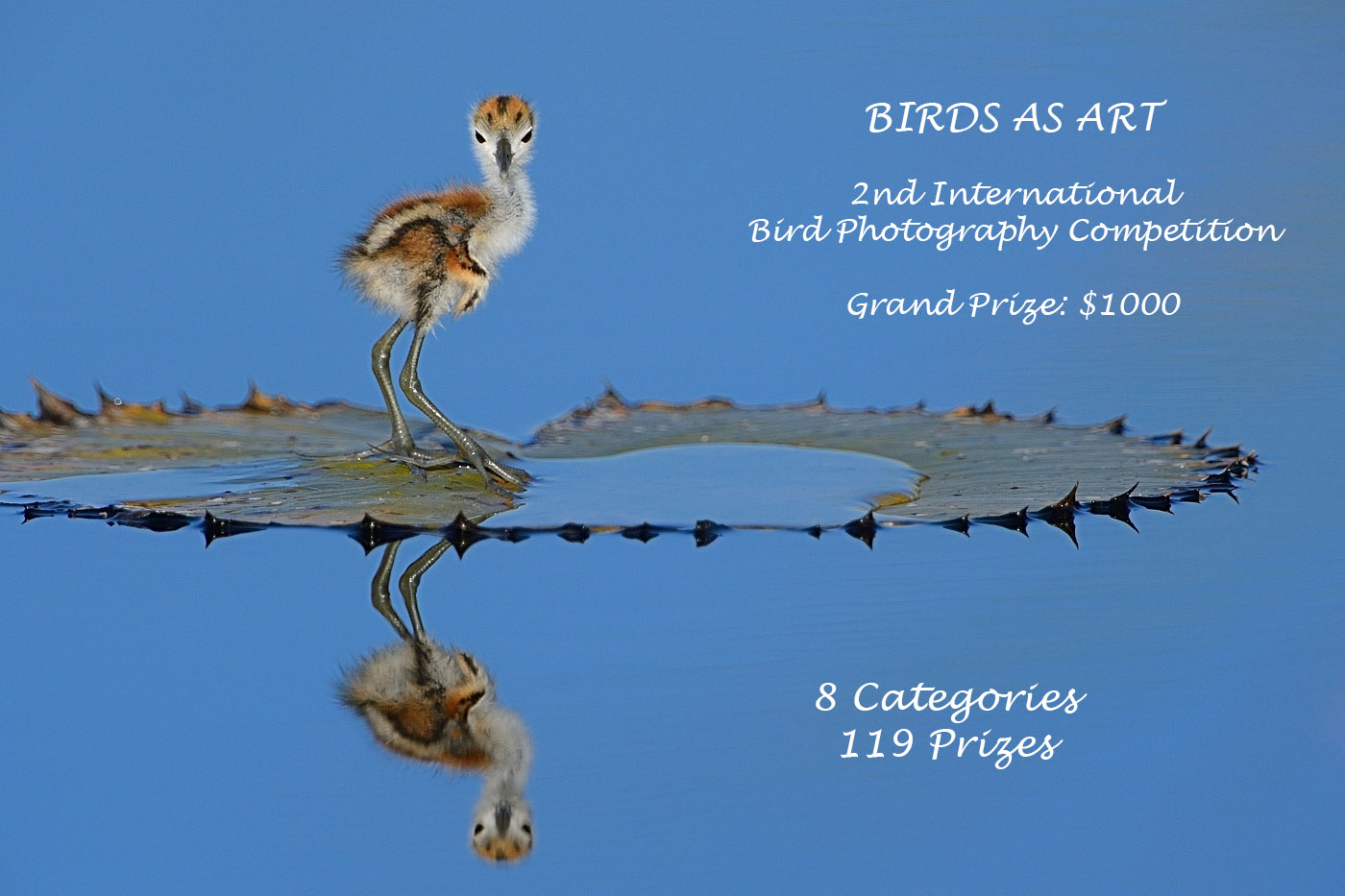The Amazing Streak Continues; I Gotta be Nuts. 🙂
Today’s blog post marks 44 days in a row with a new post, a new record by far that should continue for at least another week or two. Or not. 🙂 To show your appreciation, we ask that use our B&H and Amazon affiliate links for all of your B&H and Amazon purchases. Please check the availability of all photographic accessories in the BIRDS AS ART Online Store. We sell only what I use and depend on. We will not sell you junk. We know what you need to make creating great images easy and fun. And we are always glad to answer your gear questions via e-mail.
You can find the following items in the store: Gitzo tripods, Mongoose M3.6 and Wimberley heads, plates, low feet, and accessories, flash brackets, , Delkin e-film Pro Compact Flash Cards, LensCoat products, and our unique line-up of educational materials including ABP I & II, Digital Basics, Site and Set-up e-Guides, Canon and Nikon Camera Users and AF e-Guides, and MP-4 Photoshop video tutorials among others.
We would of course appreciate you using our B&H and Amazon affiliate links for all of your B&H and Amazon major gear, video, electronic, household, and personal purchases. For the photographic stuff mentioned above we would of course great appreciate your business.
Thanks and enjoy today’s blog post!

|
|
This image was created at the west jetty at Shinnecock Inlet, Hampton Bays, Long Island, NY with the Gitzo 3532 LS carbon fiber tripod, Mongoose M3.6 head, the Canon EF 600mm f/4L IS II USM lens, the Canon 2x EF Extender III (Teleconverter), and the Canon EOS-1D X. ISO 800. Evaluative metering +1/3 stop: 1/400 sec. at f/10 in Av mode. Central sensor (by necessity) Expand/AI Servo Rear Focus AF on the bird’s neck active at the moment of exposure. Click here if you missed the latest version of the Rear Focus Tutorial. Click on the image to see a larger version.
|
Not A Snowy Owl I
I landed at Islip on Tuesday about 10 minutes early and was soon picked up by my little sister Arna who picked me up and took me to my Mom’s house. Arna lives with Mom. It was bitter cold. Mom was of course glad to see me. I had lunch and headed out to the Shinnecock Inlet Jetty. As I was in a hurry I did not dress properly; no long johns, not lined jeans. No cold weather face mask. With the temperature at 10 degrees and wind gusts of 35 mph from the west that did not work out to well….
I photographed this drake Black Scoter while half-hiding behind a large jetty rock. I converted the RAW file in DPP, pulled the Curve up to lighten it up, ran about a 40% layer of NIK Detail Extractor on the bird only, cleaned up the specular highighs, and applied a Contrast Mask to the face only for quasi-sharpening. Click here to learn why I do 99.9% of my conversions in Canon’s Digital Photo Professional.

|
|
This image was created from the original optimized image above. See below for details. |
Bird Removal
To eliminate the out-of-focus Surf Scoter I used one of techniques described in detail in APTATS II. The whole thing took less than a minute. Order APTATS II by phone and mention this blog post and Jim or Jennifer will be glad to apply a $10 discount.
The Impossible Bill Color
In life, the bill of a drake Surf Scoter looks positively bright orange, especially in late afternoon sun. When captured digitally, the bill looks positively bright yellow. With the first two images I did my best to get the bill color right using various Color Balance and Selective Color tricks but was only able to succeed to some degree…. The upper and central parts of the bill still look way too yellow. See the solution immediately below.

|
|
The bill color here looks natural to me, pretty much as I saw it in the field…. See more below. |
Solving the Bill Color Problem
To solve the bill color problem I converted the RAW file in ACR and adjusted various Yellow and Orange sliders on the HSL tab–Hue, Saturation, Luminance. It was the first ACR conversion that I have done in about a year. The blue in this image are not as pleasing or natural as the blues in the DPP-converted image; I should have done some color correction work.
Image Questions
Do you like the image with the Surf Scoter or without the Surf Scoter? If you have any ideas on how to get the bill color right in DPP I would love to hear them.
DPP RAW Conversions
I use DPP to convert all of my Canon RAW files. To learn why I switched from ACR to DPP for my RAW conversions see our DPP RAW Conversion Guide here.
The San Diego Short-Notice Small Group IPT. January 15-17, 3-Full Days: $1049. Meet and Greet after dinner on your own at 7:30pm on Tuesday, January 14, 2014. Limit 6/Openings: 1.
Please call or e-mail for late registration discount information.
We will get to photograph the California race of Brown Pelican in flight, resting, preening, cleaning their bill pouches, and talking to their neighbors by tossing their bills high in the air. The afternoon sessions will feature Marbled Godwits, several gull species, and Wood and Ring-necked Ducks. If we have a cloudy morning we will get to photograph Harbor Seals. You will learn to get the right exposure every time, to see the best situation, to think like a pro, to create sharp, pleasing images, and to understand the joint effects of light and wind on the birds. All in a small group with tons of individual attention.
A $500 non-refundable deposit is required to hold your slot for this IPT. Your balance will be due no later than January 7, 2014. The balance is alo non-refundable. If the trip fills, we will be glad to apply a credit applicable to a future IPT for the full amount less a $100 processing fee. If we do not receive your check for the balance on or before the due date we will try to fill your spot from the waiting list. If your spot is filled, you will lose your deposit. If not, you can secure your spot by paying your balance.
If you are planning to register please shoot me an e-mail.
Then please print, complete, and sign the form that is linked to here and shoot it to us along with your deposit check (made out to “Arthur Morris.”) Though we prefer a check, you can also leave your deposit with a credit card by calling the office at 863-692-0906. If you register by phone, please print, complete and sign the form as noted above and either mail it to us or e-mail the scan.
If you have any questions, please feel free to contact me via e-mail
Last Year’s Grand Prize winning image by Lou Coetzer

|
Important Contest News
Contest Deadlines Extended!
BIRDS AS ART 2nd International Bird Photography Competition
New Entry Deadline: January 31, 2014; see additional details below
With so many folks signing up at the last minute and with so many folks having trouble uploading their images due to server overload the deadline for entering the contest (registering and paying) has been extended until January 31, 2014 and the deadline for uploading images has been extended until midnight Eastern time on February 10, 2014. Take advantage of this extension to have a crack at the great prizes.
Learn more and enter the BIRDS AS ART 2nd International Bird Photography Competition here. Twenty-five great prizes including the $1000 Grand Prize and intense competition. Bring your best.
Register and Pay
To register click here.
To learn of payment options, click here.
Support the BAA Blog. Support the BAA Bulletins: Shop B&H here!
This Bulletin took about 12 hours to prepare
We want and need to keep providing you with the latest free information, photography and Photoshop lessons, and all manner of related information. Show your appreciation by making your purchases immediately after clicking on any of our B&H or Amazon Affiliate links in this blog post. Remember, B&H ain’t just photography!
Amazon
Everyone buys something from Amazon, be it a big lens or deodorant. Support the blog by starting your search by starting your search by clicking on the logo-link below. No purchase is too small to be appreciated; they all add up. Why make it a habit? Because I make it a habit of bringing you new images and information on an almost daily basis.
Typos
In all blog posts and Bulletins, feel free to e-mail or leave a comment regarding any typos, wrong words, misspellings, omissions, or grammatical errors. Just be right. 🙂
IPT Info
Many of our great trips are filling up. See especially info on the South Florida, Holland, and Nickerson Beach IPTs. Two great leaders ensure that you will receive individual attention, have all of your questions answered, and learn a ton including how to think like a pro, see the situation, and get the right exposure every time. In addition you will have fun, and make lots of great images. Click here for IPT details and general information.


















Hi Artie,
Question about the phone deal you mentioned for APTATS II. Does that apply to the bundle of I and II as well or would that be pushing my luck? 🙂 I’ve had your digital basics file for a while now but feel like I could definitely stand to learn more about Photoshop than I do. Right now I’m mostly a Lightroom and Nik guy with only a little Photoshop knowledge despite owning CS6. Correct me if I’m wrong but it seems like it would probably benefit me most to get both APTATS CDs.
Hi Chris, I will meet you halfway: call Jim and order APTATS I & II and we’ll give you $15 off the pair. Yes, you will benefit greatly in Photoshop. artie
ps: That’s $35 for the pair.
Great, I definitely will do that in the next couple of days. Might have to wait until Tuesday because I’m headed back down to La Jolla tomorrow morning for the Pelicans and other birds!
Great and thanks. Let me know how you do at LaJolla. artie
It was a heck of a day there this morning. I went last week and the upper cliffs were almost totally empty except for a couple of gulls and the lower shelves only had maybe 10 or so pelicans at the peak. Today the upper shelves had around a hundred pelicans for much of the morning with some decent chances for flight photography as well. A few dozen cormorants and gulls too. The biggest challenge was probably finding isolated birds to photograph since there were so many.
Hopefully you’ll have luck in a couple of days here.
Artie,
You might try using the adjustment brush in ACR…………let’s you pinpoint a specific area to work on quite nicely. If the bill is too orangy you can push the temperature towards yellow and and the tint towards green……..this should make it more yellowish if that’s what you’re after. Or, if you’re just trying to “tone down” the orange you can reduce saturation and/or exposure on the targeted area……….that may help also.
Artie,
You might try using the adjustment brush in ACR…………let’s you pinpoint a specific area to work on quite nicely. If the bill is too orangy you can push the temperature towards yellow and and the tint towards green……..this should make it more yellowish if that’s what you’re after.
With out the second Surf Scoter, for sure.
The second bird is the first Surf Scoter 🙂
“A bird in the hand is better then two in the water” Okay thats not how that saying goes, but what I’m saying is I like the photo with only one duck in it. Thanks Artie for doing this blog for 44 days in a row. We are taking bets here on how long this streak will go.
Tony
Hey Tony, That cracked me up. I can be bought you know!
They say laughter is the best medicine! I have heard that you could be bought for the right price. All kidding aside, I do want to sincerely thank you for all that you do for us photographers! Due to my budget and lack of long lenses I’m not able to go on your IPT’s. What I can do is keep buying my photography needs from your store, or from one of the links on your page. People like you and Denise make this world a better place to live in!
Thanks again,
Tony
And so do you! Thanks for your store purchases. It is nice to have you commenting here. artie
The first thing I would try for the color issue here would be to first go to the Camera Calibration tab in ACR and try the various Camera Profile settings. The default Adobe Standard will often blow out reds/yellows for Canon cameras. Then look at the HSL adjustments if more adjustment is needed.
The color on the bird looks better to me in the DPP conversion — I think you could get the same color with ACR with a different Profile and a little more tweaking.
When you do the RAW conversion filter thing in PS CC, you aren’t going back to the RAW file, with all its information. You are just using the ACR/Lightroom sliders on the equivalent of a flat PSD or TIFF, which you could do well before PS CC.
Also going back several versions of PS you could actually go back to the adjustments on the real RAW file itself if you brought the image into PS from ACR or LR as a Smart Object, and then you can go back to readjust the RAW conversion settings on the BG layer, but this can’t include any adjustment or cloning layers.
Thanks as always, Artie. I had exactly the same problem with some northern pintails I photographed at Bosque a few days ago; a sharply focused male with an OOF female behind him. I like the second bird in an image to provide context but then framing becomes an issue. In yours (and in most of the ones I took at Bosque), I’m not happy with the framing of the second bird because including her looks like an accident. So I prefer the image where you’ve removed her.
As far as with or without the Scooter…man, I don’t know.
My first choice would be without, but I’m still going back n forth on your two gull images from your previous blog entry 🙂 I can’t remember the last time I looked at
two images so much. You’re driving me nuts you know 🙂 Doug
Regarding making color corrections in ACR. PS CC now has the RAW file converter as a filter under Filter>Camera Raw filter (Ctrl+Shift+A). This allows you to create a new layer before using the filter and then you may add a mask to that layer and selectively paint in or out the adjustment. I love this new “filter”.
Thanks for the info. That does not sound as if it requires Creative Cloud…. artie
ACR is in all modern Photoshop, but the Camera Raw Filter is only part of CC. 🙂 It allows you to work on a photo in PS and then bring up ACR after you’ve already started editing the photo as if ACR were a filter like Gaussian Blur. Then the ACR adjustments you make can be on their own own layer and you can even go back into that Camera Raw smart filter and adjust the Camera Raw settings on that layer later. It’s like a super steroid PS filter.
As for the bill, mouth, and water on the photo you edited with ACR, I think all three of those things actually look more natural in the ACR edit. In the DPP converted image it appears as if there is a some kind of setting applied which give the bill, mouth, and water more contrast or punch, thus blowing out the colors. This occasionally happens to me on my Nikon cameras when I use the Nikon supplied ViewNX to process my RAW files. I sometimes have picture controls turned on in the camera like “Vivid” so that the preview I see on the LCD might look more contrasty or colorful just as a reference, or I turn on a silly camera feature like Active D Lighting that supposedly adds more depth to a JPEG just for fun and forget to turn it off. Normally these don’t affect the RAW file since I pull them into Lightroom and Lightroom doesn’t see the Nikon proprietary settings. But those few times I need ViewNX it sees those camera settings and applies them if I’m not paying attention and I sometimes get abnormally extra vivid or contrasty spots like I’m seeing in your picture when I convert to JPEG. I’m not familiar with Canon whatsoever though, so who knows.